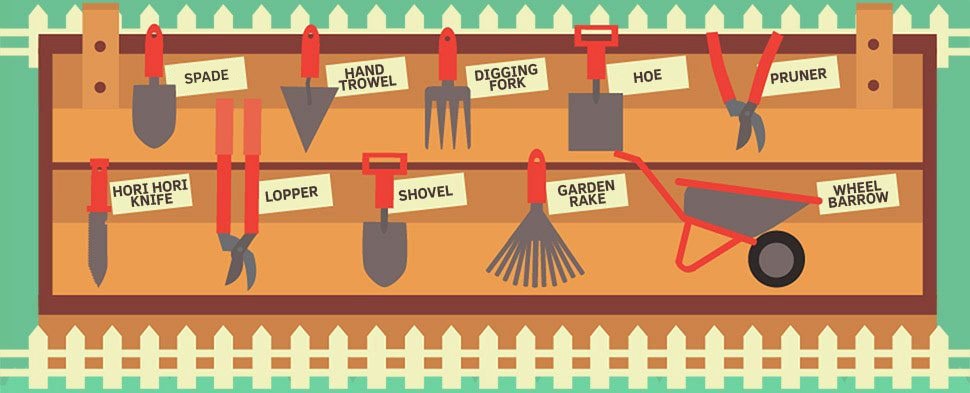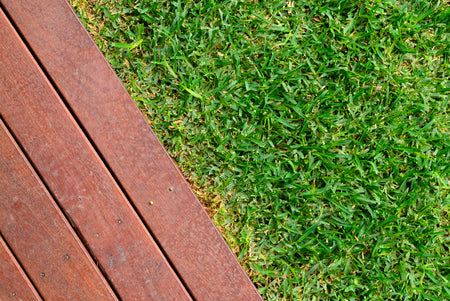DIY made easy
Landscaping and gardening both focus on cultivating and maintaining beautiful, functional outdoor spaces. These areas may include large acreages, like parks and golf courses, or small backyard gardens. However, the difference between landscaping and gardening is quite distinct.
By definition, landscaping involves creating a plan or picture for an aesthetically pleasing outdoor area—with the use of grasses, plants, trees, flowers, and hardscapes, like water features, stones, fences, planting beds, etc.
Gardening is similar to landscaping in that it involves design and maintenance. Nevertheless, gardening mainly focuses on cultivating plants or flowers within a space.
Landscaping caters to the bigger picture. A landscaper may design and plan for a
garden of any size, but a gardener is still needed to do the “dirty work,” including
planting, fertilizing, weeding, cultivating, and harvesting in season.
Landscaping and gardening have a long list of benefits
- Planting in a garden burns 177 calories in 45 minutes, weeding burns 157 calories in the same amount of time.
- Just five minutes of gardening exercise in the great outdoors can noticeably improve mood and self-esteem
- Gardening can support physical rehabilitation by retraining muscles and improving strength and coordination.
- One 8m tree in a garden can reduce overall heating and cooling costs by up to 10%.
Gardening and landscaping have countless health,
environmental, and financial benefits.
- Even a small garden can increase the appeal and value of your home to prove lucrative in the future. A larger investment in your home, like landscaping, has the potential to increase your return on investment.
- Similarly, the health benefits of gardening and landscaping abound. For many people, gardening provides the opportunity to burn calories, connect with nature, and relieve stress—all without the hassle or cost of a gym membership. When cultivating a vegetable garden, the fruits of your labors can improve your health in the form of fresh fruits and vegetables, straight to your table. Gardening also protects mental health as it is likened to a “meditative experience” to reduce stress, anxiety, and even depression.
- Gardening with eco-friendly goals in mind can greatly benefit the environment. Mulching in a garden can help to reduce water evaporation in soil by up to 70%. Gardening can also help to cut down on household waste with the use of a compost bin, instead of sending coffee grounds, eggshells, and vegetable scraps to a landfill.
Turning food scrapes into compost is a cornerstone of organic gardening. Whether it’s pit composting on site in the garden or composting in a worm bin, tumbler, or homemade bin, composting food scraps ultimately yields rich soil that is full of nutrients and microbes.
Mulch is another organic gardening technique. This blanket buries and protects seeds and can also be spread around larger plants. This gives the plants a huge advantage and also protects the soil microbes around them that form the vital basis of the ecosystem.
You can create or help a healthy soil food web by making sure you have 5% to 10% organic matter in your soils by just adding compost to your lawns and gardens. A healthy soil food web creates the best conditions for soil and plant health and is better for the environment.
Different types of gardens
- Container Garden A simplified version of a beginner garden; plants can be cultivated in planters, wheelbarrows, link wall blocks, or barrels in small backyards or urban areas.
- Family Garden A multipurpose, backyard play area designed for families with children; the perfect place to unwind or play on the weekend
- Flower Garden Cultivated for the purpose of pleasure and beauty; compared to a vegetable garden, a flower garden requires much more care and maintenance
- Herb Garden An ideal garden style for an avid gardener or cook; can be used to cultivate perennial and annual cooking herbs in a backyard garden or window box.
- Japanese Garden Primarily cultivated for the purpose of art, scenery, and beauty; traditional Japanese gardens contain miniature, abstract gardens modeled after gardens found in Buddhist temples
- Organic Garden Cultivated strictly without pesticides or other inorganic materials; an organic garden thrives on compost to reduce waste
- Raised Garden Plants or flowers can be cultivated in raised flower boxes in areas with poor soil; raised garden boxes can also be used for aesthetic appeal in any garden
- Roof Gardens Ideal for cultivation in an urban area with limited space; roof gardens are primarily decorative and can provide benefits in sustainability, temperature control, and recreation
- Vegetable Garden Considered the most common type of garden.
- Water Garden Combines the best of both worlds in gardening and landscaping; modern water gardens cut costs with DIY landscaping additions like preformed pools and flexible liners to cultivate water plants.
These types of gardens are not all-inclusive by any means, but they do represent some of the most common garden and landscaping concepts you’ll find around the country. The beauty of gardening is that you can make each concept unique. You can also combine several primary garden styles to create a new landscape, like an organic rooftop herb and vegetable garden.
After you’ve selected your garden type, it’s time to roll up your
sleeves and get to work. Here are five important guidelines to help
you choose the right flowers and/or plants:
- Decide between annuals and perennials. If you’re growing a flower garden, this is an important distinction to make. Annuals only grow in one season, meaning that you’ll have to replant next year; perennials grow for three or more seasons in a row and may cost more upfront.
- Select specialty plants wisely. Depending on where you live, you may need to hand-pick plants that will survive in your area. Examples include drought-resistant, dog- resistant, or salt-tolerant plants.
- Choose the right season Flowers are best planted in a garden on or after the last predicted spring frost date; some bulbs can survive a frost if they are planted in the winter. Vegetable planting will also depend on season, unless you plant a year-round vegetable like beets, celery, fennel, onions, spinach, or potatoes.
- Consider light conditions. A shade-loving plant can’t survive in the heat of the sun, and a sun-loving plant can’t survive in the shade.
- Consider full growth dimensions. Plot each plant’s full diameter and height before you buy to determine where it fits in your garden plan.
You’re not ready to garden until you have
the right tools in your shed.
Next on the list, here are 10 pro tips to begin planning your garden:
- Check that your garden plot has enough sun exposure, based on individual plant needs.
- Get to know your soil. Soil can be fertilized with compost; specific plant types require specific soil environments.
- Choose between an in-ground or raised garden bed.
- Check plant/flower seasons and winter/spring frost dates
- Start slowly and plant more year after year. Over-planting early on can undercut your best gardening efforts.
- Learn how to diagram. Use the help of online garden planners or templates to plot number of rows, distance between plants, and distance between rows.
- Learn how to plant. Seedlings can be planted indoors or outdoors; if planted indoors first to get a head start on the growing season, plants can be transplanted into a garden bed later
- Learn how to fertilize. Research and choose the right fertilizer for your garden location and type—from complete, incomplete, chelated micronutrient, foliar, organic, and slow-release fertilizer
- Learn how to maintain. Create a garden care schedule to provide your plants and flowers with what they need to survive—light, water, and food in the form of water-soluble, spike, or granular nutrients.
After you’ve mastered your beginner garden,
landscaping is the next step.
Upgrade Your Garden with a Landscaping Project
If you have a large project in mind, it may be best to hire a landscaping service. Or, if you’re up to the challenge, you can brainstorm and plot a landscape yourself based on a myriad of design options. Consider a lush garden courtyard; an organized, geometric garden; a mixed foliage backyard garden border; a wild yet tamed backyard garden estate; or a paved garden path in bloom.


